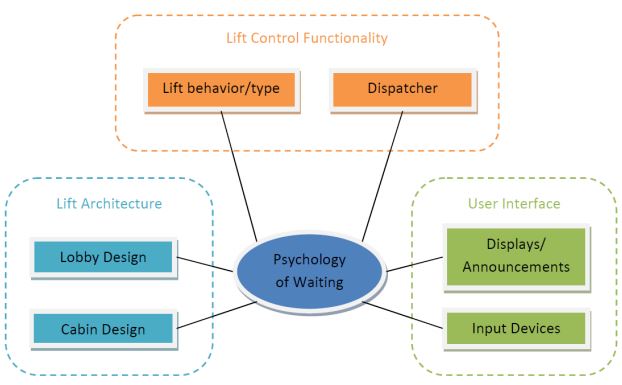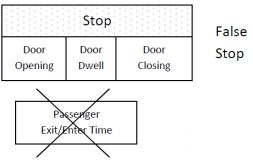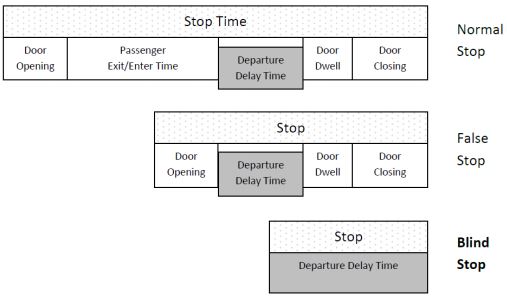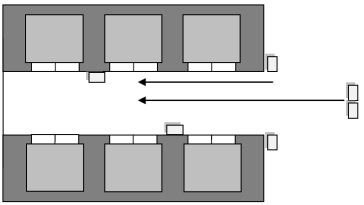A review of Waiting Time, Journey Time and Quality of Service
Rory S. Smith1
Stefan Gerstenmeyer2
1 ThyssenKrupp Elevator
2ThyssenKrupp Aufzugswerke
This paper was presented at The 3rd Symposium on Lift & Escalator Technology (CIBSE Lifts Group, The University of Northampton and LEIA) (2013). This web version © Peters Research Ltd 2019
Abstract. Waiting Time are Journey Time are generally accepted metrics for Quality of Lift Service. But not all waiting time is equally painful, and other factors do have an impact on perceived quality of service. The psychology of waiting is discussed, and its impact on design considered.
1 Introduction
Waiting Time is generally accepted as the principal metric for Quality of Lift Service. To a lesser extent, Journey Time is also a quality metric.
But other factors also need to be considered depending on the type of lift system e.g. destination systems or multi cabin systems where the waiting time and journey time needs to be defined in more detail.
Destination dispatch systems often provide lower times to destination than conventional systems. However, many such systems accomplish this through longer waiting times and shorter journey times.
In multi cabin systems, including double deck systems, the operation of one cabin affects the operation of other cabins and so there is an impact on passengers’ waiting times and journey times.
There are several types of waiting time as well as several types of transit time. These types of time are explored and defined and their effects on quality of service are analyzed.
An examination of the difference between perceived time and real time is conducted.
Additional parameters help us to quantify passenger satisfaction.
Understanding the various types of waiting time and journey time will lead to improved dispatching algorithms.
2 Background
Considerable research has been conducted on the psychology of waiting in lines. When one thinks of waiting in lines, one most commonly thinks of amusement parks, fast food establishments and grocery stores. However, waiting for a lift is a form of waiting in a line. Two authors are commonly cited in papers on the psychology of waiting; David Maister and Donald Norman.
In 1985, David Maister published a paper, The Psychology of Waiting Lines (Maister, 2013) [1].
- The following are the key concepts he presented:
- Occupied time feels shorter than unoccupied time.
- People want to get started.
- Anxiety makes waits seem longer.
- Uncertain waits are longer than known, finite waits.
- Unexplained waits are longer than explained waits.
- Unfair waits are longer than equitable waits.
- The more valuable the service, the longer the customer will wait.
- Solo waits feel longer than group waits.
Donald Norman published a paper in 2008 that was also titled The Psychology of Waiting Lines (Norman, 2013) [2]. Norman presented eight design principles for waiting lines. The principles are as follows:
- Emotions dominate.
- Eliminate confusion: Provide a conceptual model, feedback and explanation.
- The wait must be appropriate.
- Set expectations, then meet or exceed them.
- Keep people occupied: Filled time passes more quickly than unfilled time.
- Be fair.
- End Strong, start strong.
- Memory of an event is more important than the experiences.
Many of these sixteen concepts apply to waiting and riding in lifts.
3 Psychology and time to destination
The time to destination is defined in CIBSE Guide D 2010 as the time from when a passenger either registers a landing call or joins a queue, until the responding lift begins to open its doors at the destination floor and is divided into waiting time and transit time (CIBSE,2010) [3]. See Figure 1.

Figure 1
3.1 Waiting Time
The waiting time starts with the call registration. The waiting time includes walking time to the lift and standing time.
For control systems with direct allocation, the passenger, after registering his call and being assigned a lift, must walk to the lift and then stand. For control systems with reallocation and early call announcement a few seconds before the lift arrival, the passenger has to stand and then walk.
The portion of waiting time that is spent walking to the lift is occupied time whilst the time spent standing is unoccupied time. For this paper we will describe the various types of waiting and transit time as more or less painful. Therefore, occupied waiting time is less painful than unoccupied waiting time.
3.2 Transit Time
During the transit time there could be several stops and trip times. A normal stop has different phases and is shown in Figure 2.

Figure 2
It has been observed that people become impatient when there are many intermediate stops before they reach their destination (Barney & Dos Santos, 1977) [4]. One can conclude that the portion of transit time spent during intermediate stops is more painful than non-stop transit time. Each additional intermediate becomes even more painful.
4 Lift design
Psychology of Waiting applies to three General Aspects of Lift Designs The concepts of the psychology of waiting can be classified in 3 general aspects of lift designs:
1. User Interface:
This includes all the input devices used to call the elevator or to register a destination as well as output devices such as call registered lights or directions to use a particular lift. Additionally, displays and announcements can be used to inform passengers about lift status and service status. The use of special user interfaces and feedback information can affect the options of the lift behavior and dispatcher strategies.
2. Lift Control Functionality:
The lift behavior and the dispatcher functionality should consider the psychology of waiting and the quality of service. Passengers need to be transported in a good and pleasant manner. The dispatcher and the lift performance are responsible for providing the necessary handling capacity that is needed to achieve good Quality of Service.
3. Lift Architecture:
Lift Architecture includes the lobby design, cabin design, fixture design and everything that creates or affects the lift usage environment.
The experience of using the lifts is a combination of the three aspects. See Figure 3.

Figure 3
5 User interface
Good User Interfaces helps to increase passenger satisfaction and improve the perceived Quality of Service. User Interfaces need to be easy for passengers use and understanding.
5.1 Existing Lift User Interfaces
The earliest automatic lifts usually had push buttons that did not include call registered lights. When a passenger registered a call there was no acknowledgement. The lack of acknowledgement creates anxiety because the passenger does not even know if the lift is working. Additionally, the waiting time is uncertain.
Today, virtually all hall push buttons have call registered lights. However, people are often seen pushing a lighted button. The anxiety about whether or not the lift is coming still exists.
Many lift systems from Asia have the Early Call Announcement (ECA) feature where when a hall button is pushed and a fixed lift is allocated (without reallocation), the Hall Lantern illuminates and sounds a chime. This has the advantage of reducing anxiety and removing some of the uncertainty of the wait. The wait is partially explained because the passenger knows that he is waiting for a specific lift. Additionally, part of the wait is occupied by walking to the assigned lift.
Destination dispatch (DD) systems with destination input devices at all floors have the same advantages as ECA systems. However, one can assume that passengers sense they have started their journey when they tell the lift system their destination and the system advises which lift to take. Most people when asked if they like the destination dispatch systems will respond positively. Since emotions dominate, the destination based systems are perceived by the riding public to be superior. Therefore, the same waiting time may seem shorter with a DD system than a conventional system with up and down hall calls.
5.2 Future Lift User Interfaces
5.2.1 Countdown Indicators
A countdown indicator could be provided that would display the time remaining until the lift arrives at a landing. Such indicators are common in other transit situations. One often finds a display at subway stations indicating when the next train will arrive.
Such an indicator reduces anxiety and confusion while providing feedback. Additionally, one is occupied watching the display. Maister states that “Occupied time feels shorter than unoccupied time.”
It would be prudent to display a longer than expected time. Such that if the lift is expected to arrive in 10 seconds the indicator should display 15 seconds. One of Norman’s rules is to “Set expectations, then meet or exceed them.”
5.2.2 ETA Indicator
Some Destination I/O devices include an Estimated Time of Arrival (ETA) indicator. The lobby I/O device advises the passenger which lift to take and informs him when it will arrive.
5.2.3 Destination Input / Output Devices
Destination input/output (I/O) device designs vary greatly. Some are simple number pads for destination entry combined with a dot matrix display to indicate the assigned car. Others use more sophisticated Graphic User Interfaces (GUI) such as touch screens similar to those one finds at ATM machines. Whilst both types of I/O devices are equally functional, the use a GUI could be perceived as more pleasurable
The more interesting the device the stronger the start. Norman recommends that we start strong and end strong.
6 Lift control functionality
6.1 The Psychology of Waiting; Future Lift Design
The dispatching algorithm plays a key role in creating a pleasant passenger experience. Many algorithms for destination dispatching systems are based on optimizing time to destination, waiting time and transit time.
Waiting Time vs. Transit Time
Many destination dispatch systems produce shorter times to destination than conventional systems but do so with longer waiting times. Waiting time is assumed by most to be more “painful” than transit time. This can be explained by Meister’s suggestion that people want to get started and anxiety makes waits seem longer. Once one is in the lift there is no further anxiety about when the lift will arrive and one knows that the journey has started.
If a destination dispatch system had the same Waiting Time and Transit Time as a conventional system, then one might perceive that the DD system had a shorter Journey Time. This is because of less anxiety and the feeling that the journey started with the entry of the destination in the destination input device.
How should a dispatcher choose between the following two options with identical Journey Times?
- Waiting Time: 30 sec., Transit Time: 30 sec., Journey Time: 60 sec.
- Waiting Time: 15 sec., Transit Time: 45 sec., Journey Time: 60 sec.
The apparent best choice would be option 2.
However, if option 2 had a waiting Time of 15 seconds and a Transit Time of 50 seconds, would option 2 still be the best option? For example
- Waiting Time: 30 sec., Transit Time: 30 sec., Journey Time: 60 sec.
- Waiting Time: 15 sec., Transit Time: 50 sec., Journey Time: 65 sec.
Is the option with a 5 second longer Journey Time and a 15 second shorter Waiting Time the preferred option? The answer would depend on the relative pain of Waiting Time and Transit Time.
Another dispatching choice with identical Journey Times would be the following:
- Waiting Time: 2 sec., Transit Time: 58 sec., Journey Time: 60 sec.
- Waiting Time: 10 sec., Transit Time: 50 sec., Journey Time: 60 sec.
One of Norman’s principals is that “Waits must be appropriate”. People expect to wait for lifts. If the wait is appropriate then it is not painful. Therefore, a 10 second waiting time may be no more painful than a 2 second waiting time. Whilst a 58 second Transit Time may well be more painful than a 50 second Transit Time.
6.2 False Stops and Delays
6.2.1 Single Car per hoistway single deck
A false stop is a stop of a lift where the doors open and close without passenger transfer as shown in Figure 4.
A false stop could be caused by a passenger registering a landing call but then walking away. A false stop is causing more confusion when it is not explained.
A better option is to avoid false stops. This can be done with machine vision sensor that cancels the landing call if lobby is empty. This reduces stops and avoids confusion.

Figure 4
6.3 Multiple Cabin Systems
6.3.1 Departure Delay and Blind Stops
Multi cabin systems, like double deck systems, can experience Departure Delays because the loading times for the two cabins are not equal.
With two cabins in one hoistway there can be a departure delay if one cabin blocks the way of the other. The cabin blocking the path must move to a new position before the other car can move.
“Blind Stops” occur with Double Deck lifts when a stop is made for one cabin but a stop is not required for the other cabin. This is shown in Figure 5.
The Blind Stop must be explained to the passengers because unexplained waits seem longer than explained waits. Fortune recommends using a display that states “SERVING OTHER DECK” when a blind stop occurs (Fortune, 1995) [5].
Additional departure delays and false stops can be considered by the dispatcher during the cost function and allocation.

Figure 5
7 Lift architecture
Architectural elements can have a significant effect on the lift experience. The following are some features that should be considered.
Mirrors: Mirrors animate passengers to check their hair or clothing while they are waiting and so they are kept occupied (Abilla, 2012) [6]. Also with mirrors in lift cabins appear larger and therefore more comfortable.
Space: The size of the lift lobby and the cabin needs to be comfortable for the number of passengers using the lifts at the same time.
InfoTainment: InfoTainment can be placed inside the lift cabin or in the lift lobbies. In-car information displays have become very common. One well-known brand is Captivate (Captivate, 2013) [7]. The displays present a mix of news, weather, traffic information and advertising.
The building owner receives revenue from the advertising. However, watching the displays makes Waiting Time and Transit Time also occupied time and therefore it feels shorter than it is.
Position of Destination Input Devices: The Destination Input Devices Destination Dispatch Systems are often located outside the lobby. This is shown in Figure 6. Passengers can register their call and a lift is allocated before they enter the lift lobby. The walking time to the lobby is part of the waiting time. This is occupied waiting time and passengers already get started since their journey time starts after the call registration with walking to the lift (lobby).

Figure 6
Whenever the waiting time is shorter than the walking time the lift has an additional departure delay as shown in Figure 7. This affects the handling capacity. For passengers already in the cabin the delay is unexplained and uncertain. The Call Dispatcher can avoid such allocations, although in special instances this could be the best allocation.

Figure 7. Stop for a single passenger with additional walking time entering a lift
It is helpful if the walking distance is not too far. Passengers forget their car assignment and a second call is generated. A maximum walking distance to the lift lobby of 10m seems to be reasonable.
8 Findings and conclusions
There is a need to quantify the perceived pain associated with the different types of Waiting Time and Transit Time. This can only be accomplished through research. Dispatch algorithms can then be created that utilize this knowledge.
The various aspects of lift design affect the perceived pain and need to be considered at quantifying the weight of the pain during the different phases. Depending of the lift appearance, the user interface and the lift control functionality the experience of the lift usage can be different although the duration of waiting time and transit time is the same.
Also cultural issues, special needs, experience of the lift user, and current emotional situation of the passenger affect the perceived quality of service.
Quality of Service is not only the lobby waiting time. It is more than that. It is the total experience the passenger makes during the lift usage.
REFERENCES
- D. Maister, The Psychology of Waiting Lines Available from: http://www.david maister.com/5/52/ Last accessed: 01 June, 2013.
- D. Norman, The Psychology of Waiting Lines Available from: http://www.jnd.org/ms/Norman The Psychology of Waiting lines.pdf Last accessed: 02 June, 2013.
- CIBSE, The Chartered Institution of Building Services Engineers Transportation Systems in Buildings, Guide D. CIBSE, Norwich (2010)
- Barney, G. and Dos Santos, S. (1977) Lift Traffic Analysis Design and Control. London: Pereginus
- Fortune, J. (1995) Modern Double Deck Elevator Applications and Theory Elevator Technology 6, Proceedings of ELEVCON 1995 (The International Association of Elevator Engineers)
- P. Abilla, On Queuing and Elevator Mirrors Available from: http://www.shmula.com/onqueueing-and-elevator-mirrors/384/ Last accessed: 20 October, 2012
- Captivate, About Available from: www.captivate.com Last Accessed: 09 June, 2013
